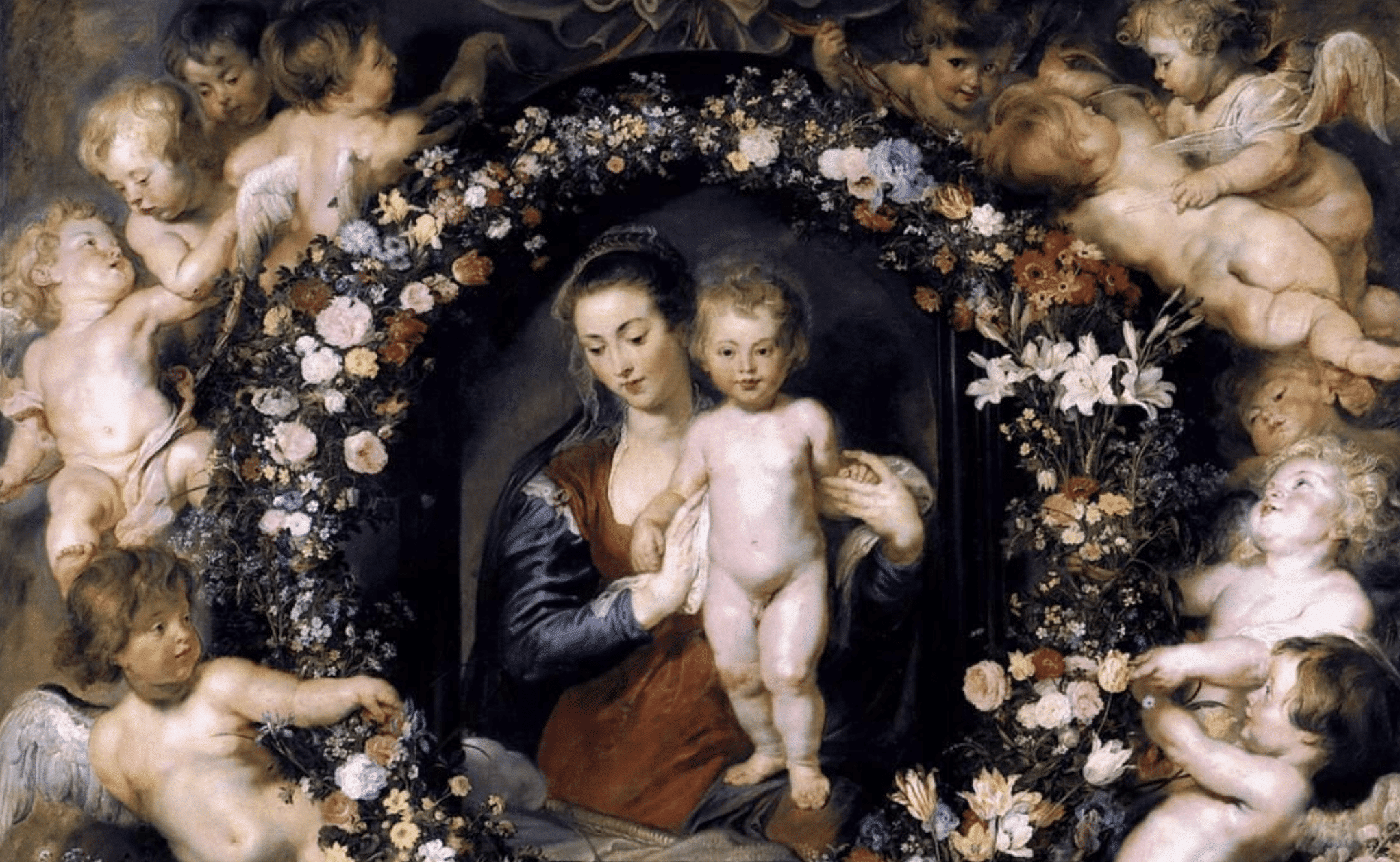In our parish a group of us gather before Mass to pray the rosary and the Litany of the Blessed Mother. From where did the Litany of the Blessed Virgin come? And what do the titles “Mirror of Justice,” “Seat of Wisdom,” “Mystical Rose,” “Tower of David,” “Tower of Ivory,” “House of Gold,” “Morning Star” and “Ark of the Covenant” mean?
According to the Dictionary of Mary, published by Catholic Book Publishing Company, the Litany of the Blessed Virgin has a long history. Many of the praises in the litany came from prayers of the Greek Church, in particular the Akathist Hymn which was to be sung standing out of reverence for the Incarnation. Each of 24 strophes (parts or stanzas) began with a succeeding letter of the Greek alphabet and concluded alternately with “Rejoice, O Virgin Spouse” and “Alleluia.”
The form of the litany was modeled on the earlier Litany of the Saints. The Dictionary speculates that the Litany of the Blessed Virgin originated in Paris. It probably dates from between 1150 and 1200.
The Litany of the Blessed Virgin is sometimes called the Litany of Loreto, because we know it was used at the Shrine of Our Lady of Loreto, as early as 1558. Pope Sixtus V gave approval to the prayer in 1587. Over the years the Church added the invocations, “Queen conceived without sin,” “Queen assumed into heaven,” “Queen of the Most Holy Rosary” and “Queen of peace.” In 1980 the Congregation for Sacraments and Divine Worship directed that the invocation “Mother of the Church” be inserted at the proper place.
According to Our Lady in Catholic Life, by Lawrence G. Lovasik (The MacMillan Company), in biblical language justice is the perfect observance of God’s commandments. Mary was perfectly responsive to the will of God; thus, she is the reflection of God’s own holiness. She mirrors the holiness of God. She is the “mirror of justice.”
Mary can be called the “Seat of Wisdom” because wisdom became incarnate in her son Jesus whom she carried in her womb. And she herself possessed and practiced true wisdom in the highest degree. The rose is regarded as the queen of flowers. Goodness and holiness flower in the saints. Mary, the queen of saints, can be called then the “Mystical Rose” and in her are found the mystical mysteries.
According to Lovasik, the “Tower of David” was the strongest tower in the wall of Jerusalem. It was so strong it survived Rome’s destruction of the city of Jerusalem. Lovasik sees the Church as the new Jerusalem and Mary as the strong point in the Church’s fight against evil.
“Ivory” is suggestive of peace, wealth and joyous feasting. Wealthy people among the ancients lined their palaces with ivory. Lovasik, then, calls Mary a “Tower of Ivory” reaching to the heavens as a sign of peace. In her is the wealth of grace that comes from union with God.
Chapters 6 and 7 in First Kings describe the temple that Solomon built. The author writes that the entire temple was overlaid with gold! (6:22) So, too, the altar and many of the furnishings were of gold (7:48-50). Mary was the temple of God; her womb “housed” the Lord. She is the “House of Gold.”
If you look in the dictionary, you may discover that the Planet Venus is called the morning star. That is because it appears in the eastern sky just before or at sunrise. Mary is the “Morning Star” that heralds the coming of Jesus, the sun of justice and the dawning of the day of redemption.
In Chapters 25 and 40 of Exodus there is a description of the Ark of the Covenant. It was a symbol of God’s presence to Israel. And in the ark were placed the Commandments of the Law—God’s covenant with Israel. Mary was the “Ark of the Covenant” in the sense that her womb contained the maker of the Law; she made God present to humankind in the incarnation of the Son.








